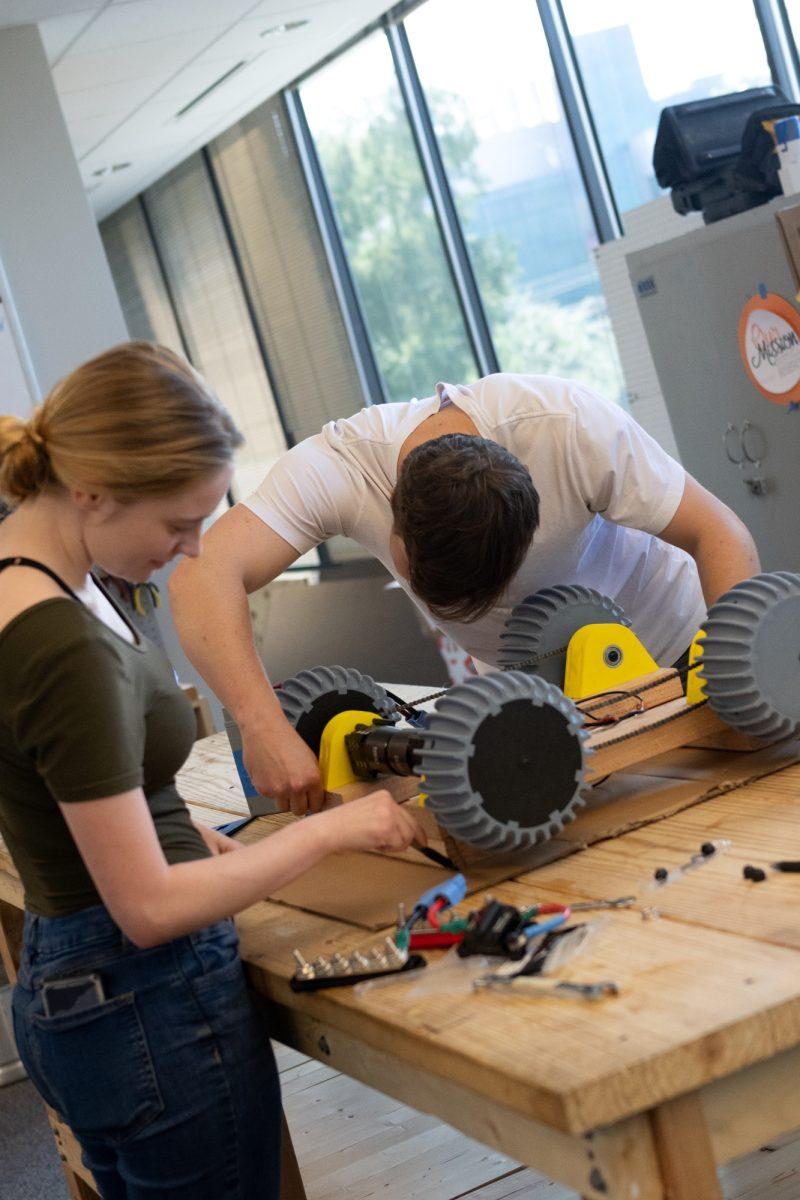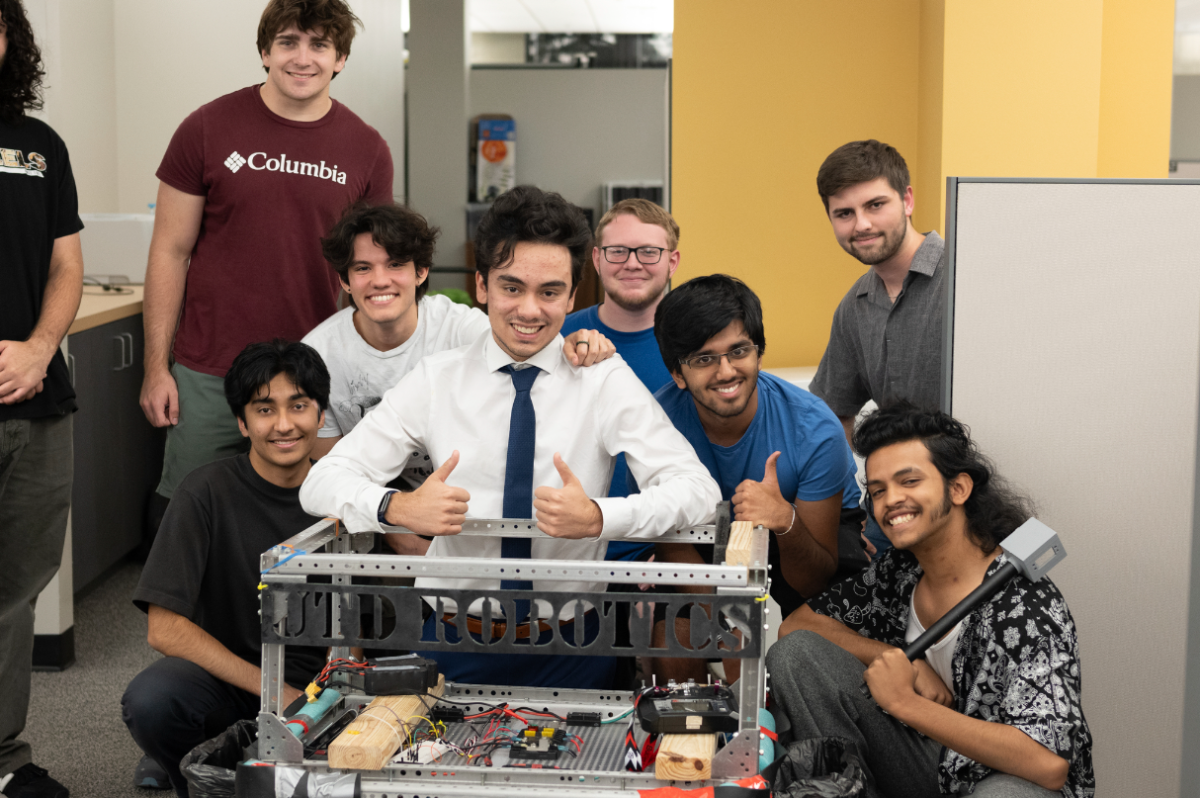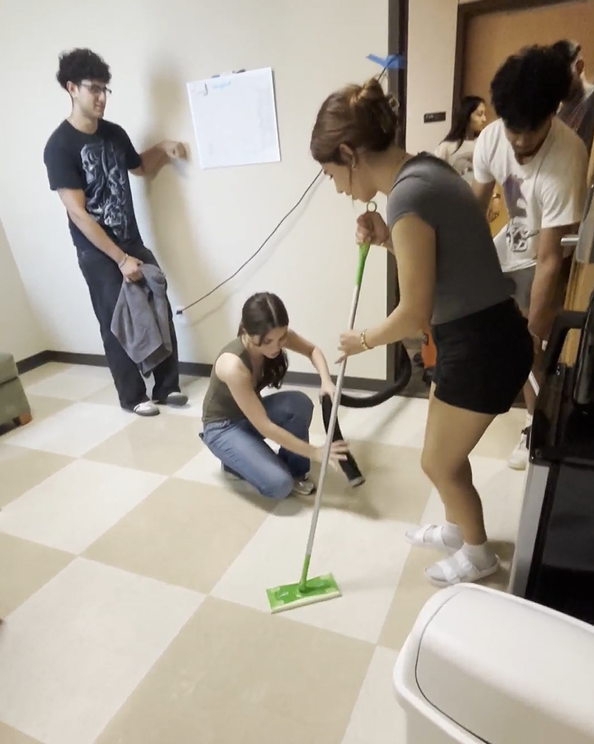Correction, Sept. 6: A previous version of the article incorrectly spelled an instance of “Comet Aerobotics.”
Comet Aerobotics, a new branch of the American Institute of Aeronautics and Astronautics at UTD, became the first UTD team to compete in NASA’s 2025 Lunabotics Competition by building a lunar rover that could help advance NASA’s Artemis moon mission.
The Comet Aerobotics branch currently has eight members who were all previously part of AIAA and its other branches before Abeni Belay, mechanical engineering senior and Comet Aerobotics director, hired them. Belay proposed the new branch to the executive team of AIAA in spring 2024.
“I joined AIAA last year as a member of Rocketry, and because I [was] being introduced to aerospace, I got to learn about what the field really entails and how there’s so much more than just rockets, planes and research,” Belay said. “After being interested in rovers and satellites and how to use robotics to solve issues with space, I went ahead and decided to start Comet Aerobotics.”
Belay said she thought the annual NASA Lunabotics Competition would be the perfect first project for Comet Aerobotics. The competition challenges collegiate robotics teams to design and build an autonomous rover that must excavate regolith — or moon dirt —and transport it to a designated area, simulating an actual lunar rover mission. Belay said that NASA hopes to use students’ contributions to the competition for Artemis — their mission to put a man on the moon for the first time since the 1972 Apollo mission. Applications for the competition open Sept. 6 and the qualifying teams will be announced Sept. 20. The competition will be held May 22-25 at the Kennedy Space Center in Florida.
During summer break, amid internships and travel plans, the team designed and built a working prototype for the lunar rover’s base, which includes the axles and wheels. The prototype is a differential drive base with cylindrical wheels — two locked front wheels and motors on the two back wheels, making it steer like a tank.
Joseph Amador, mechanical engineering sophomore and chief engineer of Comet Aerobotics, said his previous experience in the high school-level FIRST Robotics Competition led the team to design the rover from the wheels up.
“I retrofitted an electric skateboard with a mount that would allow us to test different wheel designs, because the mechanical [team] had decided that the simplest place to start would be wheels since that doesn’t change,” Amador said. “We know that we’re going to need wheels for the robot.”
Adding onto Amador’s prior knowledge, William Haga and Sasha Luich, both mechanical engineering seniors and Comet Aerobotics mechanical co-leads, spent their summer break researching and reaching out to other universities like Purdue, Ohio State and Lone Star College to prepare for the competition.
“Will [and I] wanted to understand what we, [the team], were getting ourselves into,” Luich said. “We read last year’s rulebook and did a complete dissection of that and presented that to the rest of the club. We went through all the videos — we actually found this one project [with a] complete description of the rover — electrical, mechanical, embedded. And we had a movie night with all of our members and watched it and talked about it. So, before we really started building our own stuff, we saw what was already out there, what worked, what didn’t work.”
Although the team has made great progress with a drive base prototype, Haga foresees complications in building and designing the rover’s excavator, the part that digs and picks up regolith. Luich said that the depositor, the part where the rover will deposit the regolith to be transported, will also challenge the team.
“The excavator is a particular problem because we’re not digging up sand, we’re not digging up dirt,” Haga said. “We’re digging up regolith and it’s a hard thing for us to simulate, especially as a first-year team. We’ve never once [gone] to the actual competition and seen the field, get a feel for its consistency and what you’re dealing with … We have to rely on the experience of other teams and the videos that we’ve seen.”
Besides qualifying for and placing in the competition, Belay said she hopes Comet Aerobotics’ members will build useful and practical skills needed in professional engineering fields. Luich said she hopes to gain recognition from UTD and NASA for their work and ensure that Comet Aerobotics, continues to expand and grow; Haga said that this is not a one-year team.
“The biggest takeaway is to prove to ourselves that we can do this,” said Anbarin Khalid, biomedical engineering senior and outreach lead of Comet Aerobotics. “And we really want to do a good job at leaving behind a legacy, so this creates a space for other robotics enthusiasts who come together and pursue other competitions, and [have] an impact, not only within UT Dallas, but also the community around us.”





